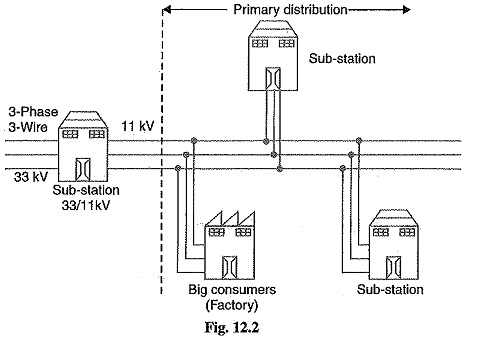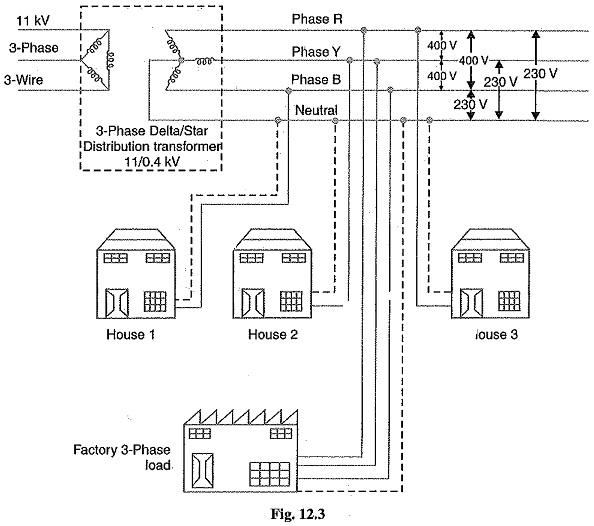AC Distribution System:
Now-a-days electrical energy is generated, transmitted and distributed in the form of alternating current. One important reason for the widespread use of alternating current in preference to direct current is the fact that alternating voltage can be conveniently changed in magnitude by means of a transformer. Transformer has made it possible to transmit a.c. power at high voltage and utilise it at a safe potential. High transmission and AC Distribution System voltages have greatly reduced the current in the conductors and the resulting line losses.
There is no definite line between transmission and distribution according to voltage or bulk capacity. However, in general, the AC Distribution System is the electrical system between the step-down substation fed by the transmission system and`the consumers’ meters. The AC Distribution System is classified into
- Primary distribution system and
- Secondary distribution system.
1.Primary distribution system: It is that part of AC Distribution System which operates at voltages somewhat higher than general utilisation and handles large blocks of electrical energy than the average low-voltage consumer uses. The voltage used for primary distribution depends upon the amount of power to be conveyed and the distance of the substation required to be fed. The most commonly used primary distribution voltages are 11 kV, 6.6 kV and 3.3 kV. Due to economic considerations, primary distribution is carried out by 3-phase, 3-wire system.
Fig. 12.2 shows a typical primary distribution system. Electric power from the generating station is transmitted at high voltage to the substation located in or near the city. At this substation, voltage is stepped down to 11 kV with the help of step-down transformer. Power is supplied to various substations for distribution or to big consumers at this voltage. This forms the high voltage distribution or primary distribution.
2.Secondary distribution system: It is that part of AC Distribution System which includes the range of voltages at which the ultimate consumer utilises the electrical energy delivered to him. The secondary distribution employs 400/230 V, 3-phase, 4-wire system.
Fig. 12.3 shows a typical secondary distribution system. The primary distribution circuit delivers power to various substations, called distribution substations. The substations are situated near the consumers localities and contain step-down transformers. At each distribution substation, the voltage is stepped down to 400 V and power is delivered by 3-phase,4-wire a.c. system. The voltage between any two phases is 400 V and between any phase and neutral is 230 V. The single phase domestic loads are connected between any one phase and the neutral, whereas 3-phase 400 V motor loads are connected across 3- phase lines directly.

